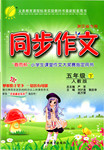题目内容
It’s been claimed that playing a musical instrument makes you smarter.
New research suggests that regularly playing a musical instrument changes the shape and power of the brain, and may be used in therapy (疗法) to improve cognitive (认知) skills.
Experts say there is growing evidence that musicians have brains that are structurally and functionally different from those of non-musicians, especially in the areas of the brain used in processing (处理信息)
The parts of the brain that control motor skills, the storage of audio information, hearing and memory become larger and more active when a person learns how to play an instrument and can apparently improve the alertness (警觉) and planning.
Lutz Jancke, a psychologist at the University of Zurich, said, “Leaning to play a musical instrument has great benefits and can increase IQ by seven points in both children and adults.We found that even people over the age of 65, after four or five months of playing an instrument for an hour a week, had strong changes in the brain.” The parts of the brain that control hearing and memory, and the part that controls the hands, among others, all become more active.
“Of course music isn’t the only answer, but I do believe that it should be used in addition to other things.”
Mr.Jancke also said that learning a musical instrument could also make it easier to learn foreign languages and make one more sensitive to understanding the emotions of others.“So not on
 ly does this make it easier to pick up other languages and have a better memory of one’s own, we have also seen musicians are able to pick out exactly what others are feeling just by the tones of their voices—sympathy, disappointment, that kind of things.”
ly does this make it easier to pick up other languages and have a better memory of one’s own, we have also seen musicians are able to pick out exactly what others are feeling just by the tones of their voices—sympathy, disappointment, that kind of things.”He added, “Several studies indeed show that playing music increases memory and language skills, but more research is needed.”
1.What is the passage mainly about?
A.How to use musical instruments.
B.How music affects the brain.
C.How playing music makes people smarter.
D.The development of research into music.
2.Compared wi
 th non-musicians, __________.
th non-musicians, __________.A.musicians are better at foreign languages
B.musicians are more active in sports
C.musicians have stronger emotions
D.musicians’ brains work differently in proce
 ssing
ssing3.Which of the following is NOT a benefit of playing an instrument?
A.It makes it easier for one to pick up foreign languages.
B.It allows one to show his feelings more exactly to others.
C.It gives one a better memory in one’s own language.
D.it makes one understand others’ feelings better.
4.From Luz Jancke we lean that _________.
A.playing an instrument benefits children more than adults
B.playing an instrument has no benefits for people over 65
C.some studies show playing music can increase memory
D.he will do more research into brain development and music
小题1:C
小题2:D
小题3:B
小题4:C
略

练习册系列答案
 春雨教育同步作文系列答案
春雨教育同步作文系列答案
相关题目
 your baby gets enough nutrients to grow. But in a small new study, researchers at the University of Auckland in New Zealand report that a mother’s regular aerobic exercise may be good for a growing fetus’ health — and may even help a baby get a healthier start in life.
your baby gets enough nutrients to grow. But in a small new study, researchers at the University of Auckland in New Zealand report that a mother’s regular aerobic exercise may be good for a growing fetus’ health — and may even help a baby get a healthier start in life. those born to the non-exercising mothers. In both groups, however, the babies were of healthy weight, and there was no difference in the mothers’ weights.
those born to the non-exercising mothers. In both groups, however, the babies were of healthy weight, and there was no difference in the mothers’ weights. ment” mean in the second paragraph?
ment” mean in the second paragraph?